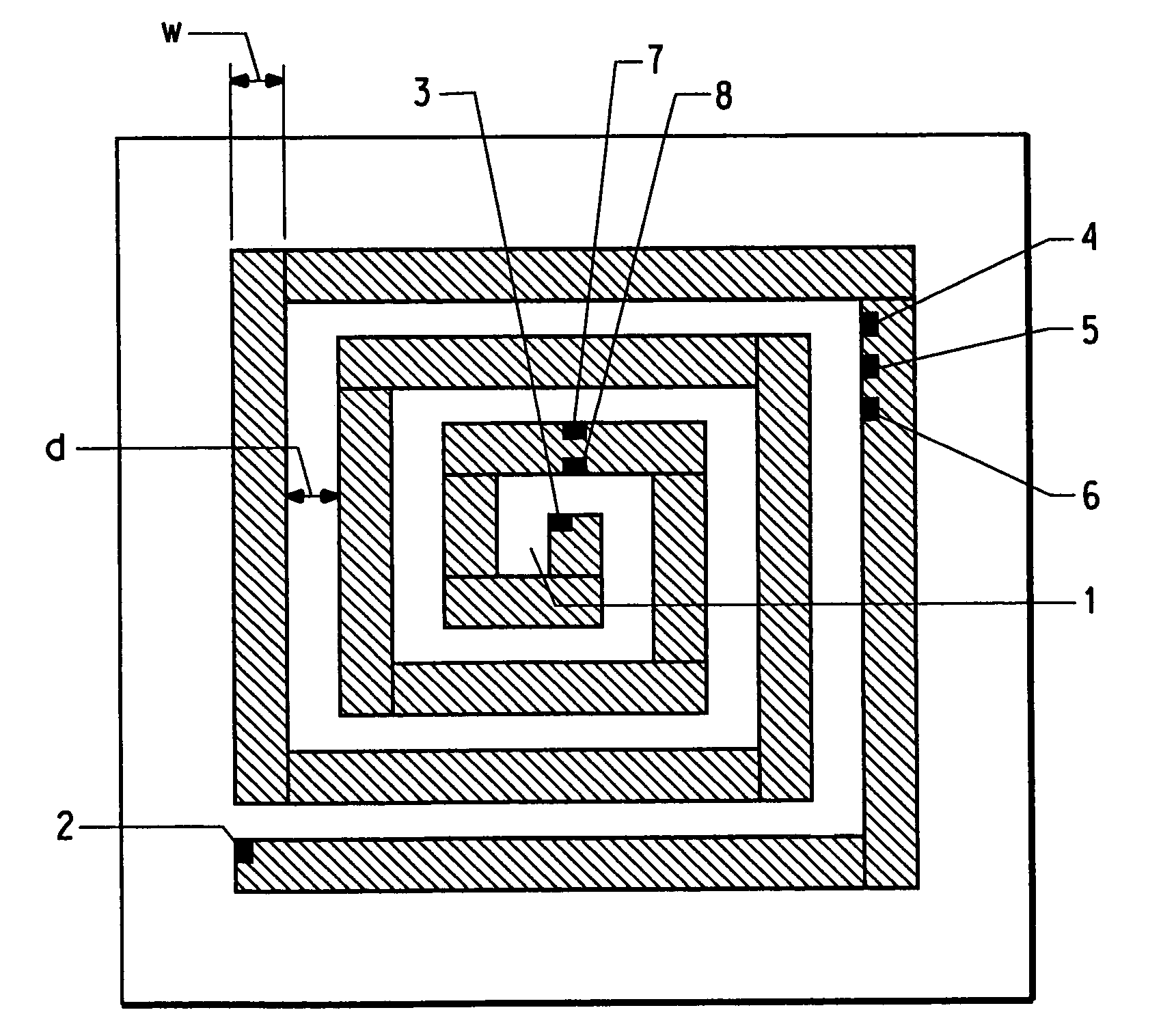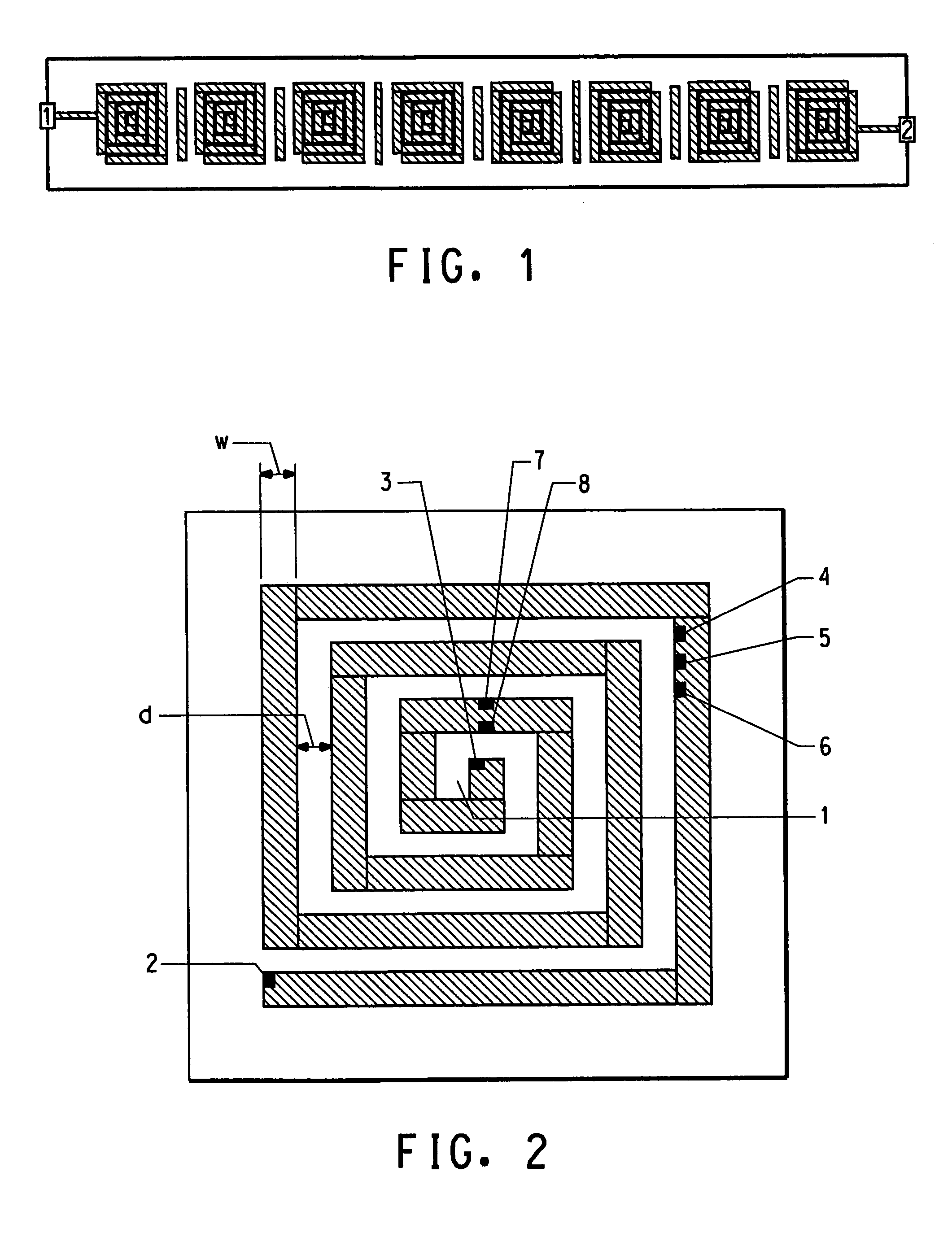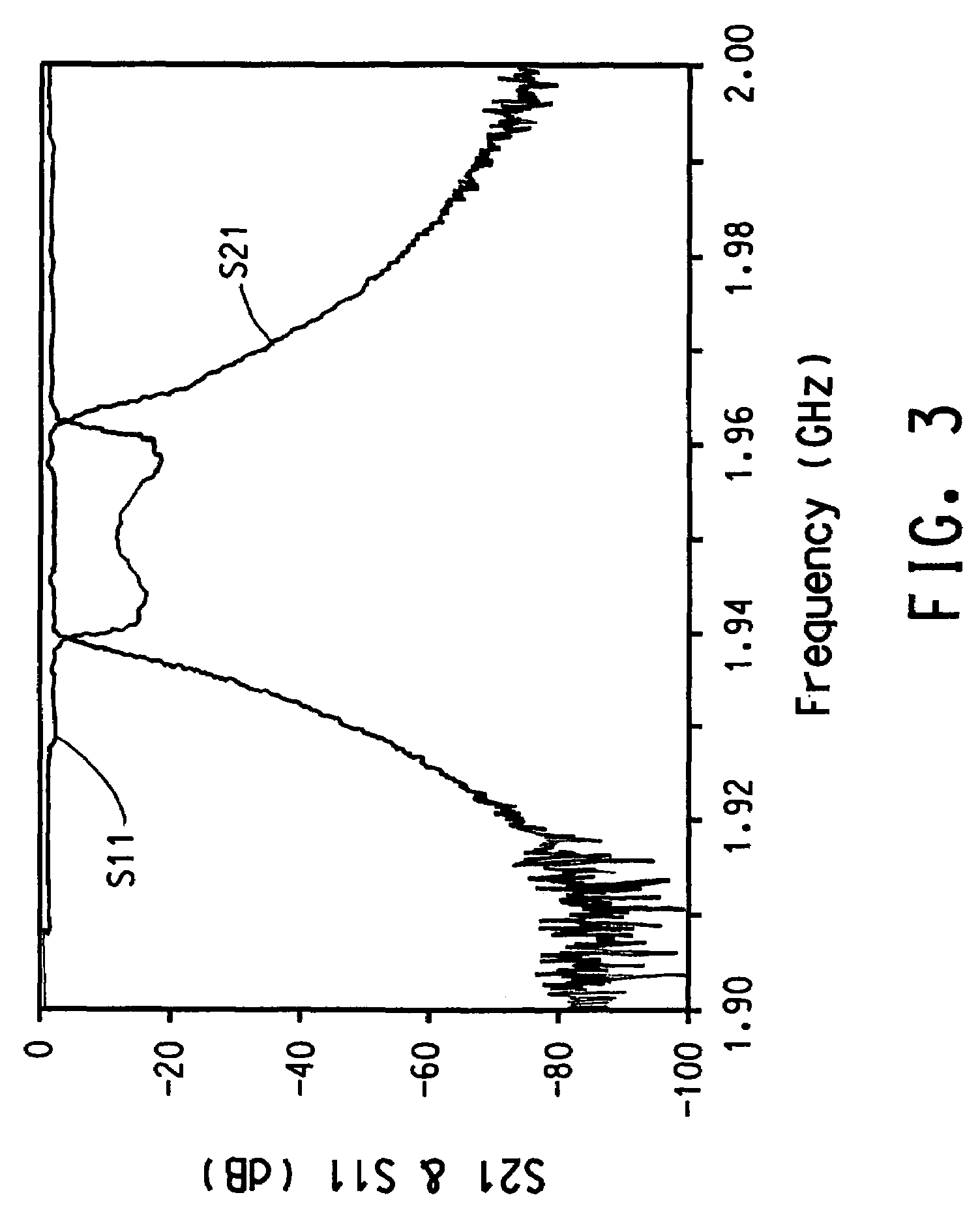Laser trimming to tune the resonance frequency of a spiral resonator, the characteristics of a high temperature superconductor filter comprised of spiral resonators, or the resonance of a planar coil
a spiral resonator and resonance frequency technology, applied in the direction of superconductor devices, conductors, waveguides, etc., can solve the problems of increasing the difficulty in producing the desired hts filter pattern, affecting the stability of the filter, and affecting the quality of the filter, so as to prevent condensation and/or frost, prevent condensation accumulation, and ensure the effect of stabilization
- Summary
- Abstract
- Description
- Claims
- Application Information
AI Technical Summary
Benefits of technology
Problems solved by technology
Method used
Image
Examples
example 1
[0061]This example demonstrates the use of the laser trimming method of the invention to improve the characteristics of the band-pass region of an 8-pole filter with the design shown in FIG. 1, while holding the center frequency and the bandwidth of the band-pass region of the filter essentially constant.
[0062]The 8-pole HTS filter is produced using double-sided Tl2Ba2CaCu2O8 films on a LaAlO3 substrate and prepared as follows. A clean, polished single crystal LaAlO3 substrate, 75 mm×35 mm×0.5 mm, was obtained from MTI Corporation, Richmond, Calif. Off-axis magnetron sputtering of a Ba:Ca:Cu oxide target with a stoichiometry of 2:1:2 is used to deposit, at room temperature (about 20° C.), an amorphous precursor Ba:Ca:Cu oxide film onto both sides of the substrate. This amorphous Ba:Ca:Cu oxide film is about 550 nm thick and had a stoichiometry of about 2:1:2. The precursor film is then thallinated by annealing it in air for about 10 minutes at 850° C. in the presence of a powder mix...
examples 2-4
[0068]These examples are carried out using Sonnet EM software, obtained from Sonnet Software, Inc., Liverpool, N.Y. 13088, to simulate the performance of a HTS spiral resonator and demonstrate the changes in the resonance frequency of the HTS spiral resonator for various amounts of ablation at the outer end of the spiral. The following model is used. The substrate had a thickness of 0.508 mm and a dielectric constant of 24 and had a front side and a back side. The spiral resonator is in intimate contact with the front side of the substrate. A ground plane, which in practice would be a blank, i.e. continuous, HTS film, is on the back side of the substrate. The grounded top cover and side walls of the circuit are all sufficiently far from the spiral resonator so as to have negligible effect.
[0069]The rectangular spiral resonator shown in FIG. 5 is chosen for the simulation. The line widths of the spiral resonator are 308 μm with a gap of 44 μm between lines. The resonance frequency of...
examples 5-7
[0072]These examples are carried out using the same Sonnet EM software and the same rectangular spiral resonator and substrate used in Examples 2-4. As for the resonator of Examples 2-4, the resonance frequency of the spiral resonator with no material removed is 1.8607 GHz.
[0073]As shown in FIG. 7A, for Examples 5-7 material is removed at the inner end 9 of the resonator to simulate the removal of HTS material there by laser ablation. The location of removal is shown in detail in FIG. 7B where the amount of material removed is shown to be a cut of depth d and length 1. In each example, the depth of the material removed is the same, i.e. d=44 μm. The lengths 1 of the cuts are 44 μm for Example 5, 88 μm for Example 6 and 132 μm for Example 7. The resonance frequency is determined for the spiral resonator of each of the examples. The resonance frequencies are 1.8605 GHz for Example 5, 1.8603 GHz for Example 6 and 1.8600 GHz for Example 7. The resonance curves and frequencies are shown ...
PUM
| Property | Measurement | Unit |
|---|---|---|
| thick | aaaaa | aaaaa |
| thickness | aaaaa | aaaaa |
| dielectric constant | aaaaa | aaaaa |
Abstract
Description
Claims
Application Information
 Login to View More
Login to View More - R&D
- Intellectual Property
- Life Sciences
- Materials
- Tech Scout
- Unparalleled Data Quality
- Higher Quality Content
- 60% Fewer Hallucinations
Browse by: Latest US Patents, China's latest patents, Technical Efficacy Thesaurus, Application Domain, Technology Topic, Popular Technical Reports.
© 2025 PatSnap. All rights reserved.Legal|Privacy policy|Modern Slavery Act Transparency Statement|Sitemap|About US| Contact US: help@patsnap.com



